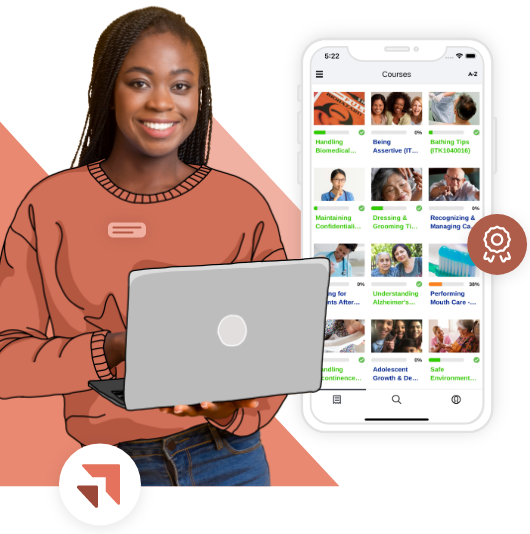What does Amazon’s One Medical acquisition mean for the post-acute care industry? Business owners in home health, hospice, home care, and primary at-home care could all be under threat.
The future of post-acute care might change forever, and faster than you think. Amazon’s acquisition of One Medical will change the landscape of home care forever—for better or worse. Incumbent post-acute care providers in home health, home care, and primary care at home should all view Amazon’s One Medical acquisition as a long-term threat to current business operations.
Before evaluating Amazon’s position in home care, it makes sense to become familiar with how Amazon has disrupted other markets first.
Why? Because the home care market might play out in a similar way. Let’s go back to 2009 and look at Quidsi, an online diaper company, and Amazon. I’ll try to make a long story short!
In 2009, Quidsi was disrupting the baby supplies market by selling diapers online with overnight delivery. Amazon had long set its eyes on the market of new families, and diapers were a logical first step to develop long-term customers to gain a foothold in this space. Jeff Bezos recognized this and said, “What I can tell you is that the idea of using diapers to attract new customers who have new families is a very traditional idea.” But Quidsi’s lower fulfillment costs created price pressure on Amazon, quickly making them Amazon’s biggest online baby supply competitor.
So, what did Amazon do? They decided to take a loss to win. After trying to buy Quidsi, Amazon slashed diaper prices by 30%. Doug Herrington of Amazon wrote, “We need to match pricing on these guys no matter the cost.” Quidsi was able to continue growth for a short while, but Amazon reduced prices further, launched “Amazon Mom,” and eventually overtook the market. During that time, internal documents showed Amazon lost $200 million in a single month—a price it was willing to pay to win the war. Eventually, Quidsi sold to Amazon.
Should we expect the same in post-acute care? Probably.
What Advantages Does Amazon Hold Over Incumbents?
On the surface, Amazon might not look like a major threat to post-acute care, but with a little research, you’ll come to find that they could potentially change the industry forever. The synergy Amazon is able to create between technology, logistics, and labor is unmatched. When it comes to the business dilemma of “buy it or build it”, Amazon can do both—and already has most of the pieces in place.
Amazon has the technology, logistical network, human capital, and negotiating power to significantly alter care delivery and operations in a way that will render most care providers uncompetitive, should they continue operating as they do today.
#1: Technological advantages
Amazon owns key technological capabilities that allow them to deliver skilled and non-skilled care. Let’s look at existing technology it might leverage in home care:
#2: Logistical advantages
Amazon’s vast network of warehouses, delivery services, and access to technology allow both digital and analog advantages to the post-acute care industry. The existing Amazon infrastructure will allow Amazon to find underserved or highly populated areas where it can optimize care through logistical advantages. Additionally, Amazon can overlay pharmaceutical delivery services, and cross-train/upskill existing staff, such as delivery drivers, to provide non-skilled care.
#3: Human capital advantages
As Amazon employs 1.1 million people in the United States, they directly compete in the employee pool that home care agencies typically leverage as their caregiver base. Additionally, the One Medical acquisition gives Amazon access to approximately 80,000 physicians. Amazon’s extensive human network, ability to subsidize benefits, and provide higher wages might potentially wick away human capital from other care providers while enticing new caregivers into the space. If Amazon recognizes areas that are highly profitable or underserved, it can cover higher wages to recruit new caregivers, or cannibalize yours.
#4: Negotiating Power
With One Medical, Iora Health, and Amazon’s existing access to the American population, Amazon will have more negotiating power with payers, pharmacies, referral networks, and partners than any other health care provider. This will allow significant negotiating power across the spectrum of entities involved in care delivery, referrals, and insurance coverage.
What a Quidsi-Amazon Situation Would Look like in Healthcare
Now that we understand how Amazon has killed and eaten competitors, like Quidsi, and we have an idea of how Amazon might leverage existing capabilities, we can try to predict what it will do in the post-acute care industry.
First, it’s likely that we’ll see Amazon make other investments and acquisitions in post-acute care. In fact, while writing this article, news leaked that Amazon is in talks to acquire Signify Health. Those investments will likely occur in areas that give Amazon a monopoly on local markets, or give it access to large labor pools in highly populated and profitable areas.
Second, when Amazon receives pushback from other providers who don’t wish to play ball, it is likely to resort to more aggressive defense tactics. This might include raising caregiver and clinician wages to acquire labor or providing care at a lower cost than other providers.
Finally, Amazon will likely continue use of One Medical’s membership plan creating pressure on payers in the industry. It might leverage scale and the vast population it serves to negotiate higher fees from insurance companies and payer sources, which in turn might increase the attractiveness and adoption of its own membership plan.
All things considered, the implications for the broader market are significant. On one hand, Amazon has the potential to help solve caregiver and clinician shortage issues by increasing wages to attract more into the industry. It might also improve access to care and increase quality. On the other hand, it’s likely to acquire or render other care providers obsolete, all the while increasing prices to consumers and other payers as it pushes out competitors, monopolizes the industry, and raises prices in the long term.
So, What Should We Do?
While Amazon’s acquisition of One Medical may pose a threat to incumbent post-acute care providers, the opportunity to evolve and grow has never been better. By maximizing efficiency through technology adoption, providing opportunities for career advancement, and demonstrating improved outcomes providers will ensure their short and long-term success.
Amazon will provide a seamless customer experience with technology that closes gaps in quality outcomes. Existing providers will need to match that level of convenience and data aggregation. The first step is to demand that disparate and disconnected systems integrate and work together, enriching data, outcomes and patient experiences.
Second, we need to prove the long-term career outcomes that only post-acute care can offer. Upward mobility in large organizations like Amazon is notoriously cutthroat and plays second fiddle to their primary objective: profit maximization for shareholders. Providers can attract and retain non-clinical care staff and CNAs by giving them the opportunity to advance their entry-level job into a career where they will see progression and increased wages over time through flexible and engaging professional development. Career ladders reduce turnover rates, provide pathways to increased wages, and create stability in both personal and business continuity.
Finally, as an industry, we must show regulatory agencies the value of post-acute care by turning insights into actions. We need to band together to collect and present persuasive data on the improved outcomes our industry delivers to effect lasting legislative change.







